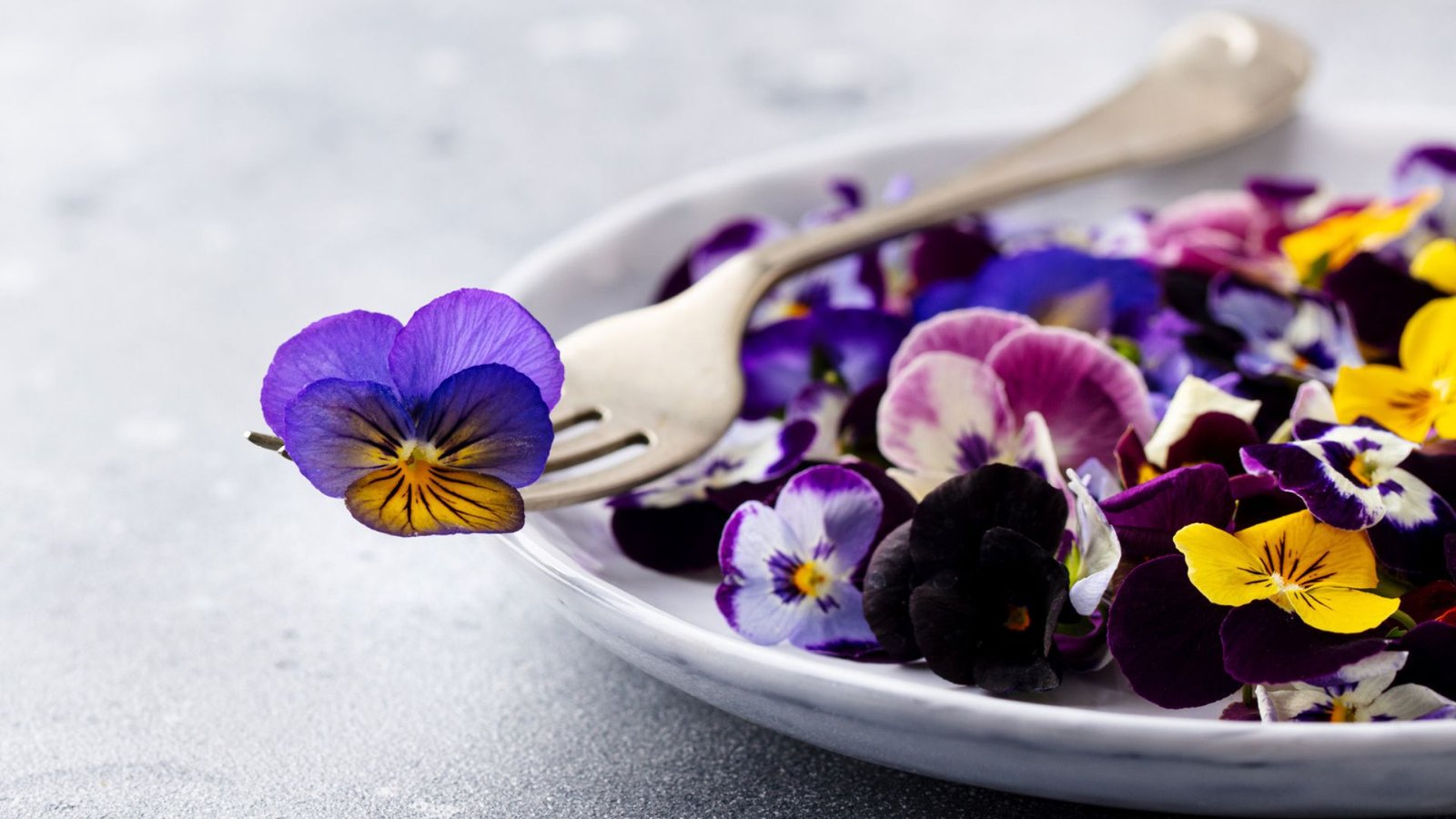Edible flowers are not just for decoration; they add flavor, color, and a touch of elegance to your dishes. Growing and using edible flowers in your cooking can enhance both the presentation and taste of your meals. Here’s a guide to some of the best edible flowers you can grow at home and how to use them in your culinary creations.

Nasturtiums
Nasturtiums are vibrant flowers with a peppery flavor, similar to arugula. They come in shades of red, orange, and yellow.
Growing Tips:
- Sunlight: Full sun
- Soil: Well-drained, fertile soil
- Watering: Regular watering to keep the soil moist
- Harvesting: Pick the flowers when they are fully open and colorful.
Culinary Uses:
- Salads: Add a spicy kick and colorful touch.
- Garnishes: Use as a garnish for soups and main dishes.
- Herb Butter: Mix with butter for a flavorful spread.
Pansies
Pansies have a mild, slightly sweet taste. They come in a variety of colors and patterns, making them perfect for decoration.
Growing Tips:
- Sunlight: Full sun to partial shade
- Soil: Rich, well-drained soil
- Watering: Keep soil evenly moist
- Harvesting: Pick the flowers when they are fully open.
Culinary Uses:
- Salads: Add a touch of color and a subtle flavor.
- Desserts: Use as a garnish for cakes, cupcakes, and ice cream.
- Drinks: Float in cocktails or lemonade for a decorative touch.
Marigolds
Marigolds have a slightly spicy and tangy flavor, with petals that can be either bright yellow or orange.
Growing Tips:
- Sunlight: Full sun
- Soil: Well-drained soil with plenty of organic matter
- Watering: Regular watering, but avoid waterlogging
- Harvesting: Pick flowers when they are fully open.
Culinary Uses:
- Rice Dishes: Add to rice for color and a hint of flavor.
- Soups and Stews: Use as a colorful garnish.
- Salads: Sprinkle petals over salads for a vibrant touch.
Chive Blossoms
Chive blossoms have a mild onion flavor and add a subtle, elegant touch to dishes.
Growing Tips:
- Sunlight: Full sun to partial shade
- Soil: Well-drained, rich soil
- Watering: Regular watering to keep the soil moist
- Harvesting: Pick blossoms when they are fully open.
Culinary Uses:
- Salads: Add a mild onion flavor.
- Soups: Garnish soups with chive blossoms.
- Cheese Spreads: Mix into cheese spreads for added flavor.
Bee Balm
Bee Balm, also known as Monarda, has a minty and slightly spicy flavor. Its flowers come in red, pink, purple, and white.
Growing Tips:
- Sunlight: Full sun to partial shade
- Soil: Well-drained, fertile soil
- Watering: Keep the soil consistently moist
- Harvesting: Pick flowers when they are in full bloom.
Culinary Uses:
- Teas: Brew into a refreshing herbal tea.
- Salads: Add for a minty touch.
- Desserts: Use as a colorful garnish.
Calendula
Calendula, also known as marigold, has a slightly peppery flavor and bright orange or yellow petals.
Growing Tips:
- Sunlight: Full sun
- Soil: Well-drained soil with organic matter
- Watering: Regular watering, avoid waterlogging
- Harvesting: Pick petals when they are fully open.
Culinary Uses:
- Salads: Add petals for color and a hint of flavor.
- Soups: Use as a garnish for soups.
- Baking: Mix into bread and cake recipes for added color.
Lavender
Lavender has a sweet, floral flavor with a hint of spice. It’s often used in baking and as a flavoring in dishes.
Growing Tips:
- Sunlight: Full sun
- Soil: Well-drained, sandy soil
- Watering: Allow soil to dry out between waterings
- Harvesting: Pick flowers when they are in full bloom.
Culinary Uses:
- Baking: Use in cakes, cookies, and scones.
- Teas: Brew into calming herbal tea.
- Savory Dishes: Add to meats and vegetables for a unique flavor.
Conclusion
Growing and using edible flowers in your cooking can elevate your dishes with unique flavors, vibrant colors, and fresh aromas. From the peppery nasturtium to the sweet lavender, each flower offers its own culinary benefits. By incorporating these flowers into your garden and kitchen, you can enjoy a burst of natural beauty and taste in your everyday meals. Happy gardening and cooking!

